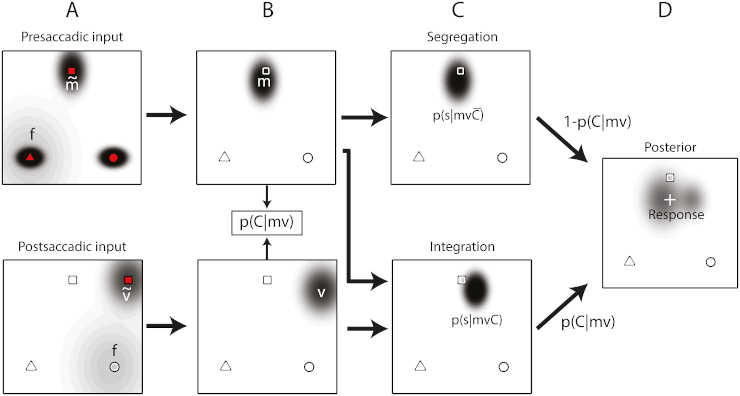Our brains must deal with a lot of uncertainty. Incoming sensory information is noisy and incomplete; our environment is continuously changing and unpredictable.
Our eyes, for example, continuously make very fast eye movements known as saccades to scan the environment. Watch your friend’s eyes; you will notice that the eyes are never still.
However, when you watch your own eyes in a mirror, you never see the motion of your own eyes. Thus, when we make these rapid eye movements, we are virtually blind.
How, then, do we detect possible environmental changes during eye movement?
Researchers at Radboud University show that the brain creates a coherent story by considering multiple probabilities about the state of the body and the environment.
Follow The Bouncing Dot
Researchers at the Donders Institute, the brain research center of Radboud University, performed an experiment in which they could determine how the brain deals with this uncertainty. They made participants watch dots on a screen, and when the eye movement was made, one of the dots jumped to a slightly different location.
They then asked their participants to report the initial location of the displaced dot. You can imagine that when the object made a big jump, participants perceive the change in location, but not, or much less so when the jump is small.

The researchers show that the brain uses causal inference to solve the problem. Jeroen Atsma, one of the study’s authors, explains this:
“The brain considers two causes simultaneously in the processing of the new visual image after the eye movement: the dot has remained stationary, and the dot has moved. But, because the visual input is noisy, the brain can never determine with absolute certainty whether the dot moved or remained stationary.
Because of this, both possibilities are considered. The brain balances the two causal probabilities to determine the initial location of the dot, which is actually statistically the most optimal strategy.”
Conflicting Information
Says Atsma, who is working on a PhD thesis that includes this study:
“We found large differences among participants. All participants always considered both causes simultaneously, but differ in how they weighted the two causes. These differences were predicted by a model by simply changing one parameter. It is now apparent that probabilities and different causes are considered simultaneously, something which does not directly follow from intuition.”
Pieter Medendorp, professor of Sensorimotor Integration at the Donders Institute, adds:
“The brain determines the causes of events, which we call causal inference. We captured something important of how the brain deals with conflicting information and uncertainty in signals. You won’t notice the causal inference process, it is all unconscious. Due to this discovery we can become aware of and measure how signals are combined, and quantify differences between people and situations.”
Reference:
- Atsma J, Maij F, Koppen M, Irwin DE, Medendorp WP (2016). Causal Inference for Spatial Constancy across Saccades. PLoS Comput Biol 12(3): e1004766. doi:10.1371/journal.pcbi.1004766
Last Updated on March 3, 2023